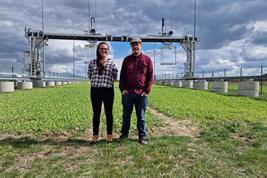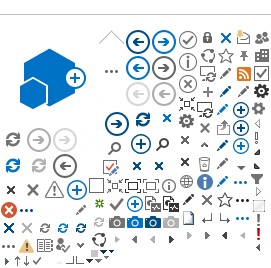14.10.2025

How can new findings from agricultural and environmental research be transferred into practice more quickly and effectively? A new study published in Nature Communications makes a concrete proposal in this regard: the combination of highly automated sensor platforms with so-called Living Labs should help to make agriculture more sustainable. The approach is being developed at the Leibniz Center for Agricultural Landscape Research (ZALF).
Agriculture is facing many challenges: Climate change, scarce resources, new demands on food production. Although research worldwide provides many innovative ideas and new approaches to meet these challenges, it often takes a long time for these to actually be put into practice. The study therefore proposes systematically combining two previously separate approaches: state-of-the-art experimentation in the field and practical Living Labs.
Automated sensor platforms as the foundation for system-based research approaches
Automated sensor platforms, such as AgroFlux developed at ZALF, use sensors, measuring devices and drones to record numerous data - for example on plant growth, soil moisture, water balance or greenhouse gas emissions. This provides precise information about the interactions in the agricultural system - continuously and automatically from the leaf to the landscape level. The aim is to make these infrastructures so flexible and scalable that they can be adapted to different regions, locations and agricultural systems, for example in Living Labs. This is a novel way to create a comprehensive, multidisciplinary understanding of agricultural processes - as a basis for sustainable innovations in research and practice.
"The future path for AgroFlux is the development of a long-term sustainable, fully automated experimental sensor platform - with modular sensor, automation and data acquisition systems that can be flexibly transferred to different locations and conditions," say Mathias Hoffmann and Maren Dubbert, authors of the study and scientists at ZALF. "This gives us a new understanding of the dynamic and complex interactions in the agricultural landscape."
From sensor to decision - a networked approach to research
Living Labs complement this technical approach. They are real farms where new ideas are not only observed, but also developed, discussed and tested directly together with farmers, advisors, researchers, authorities and other stakeholders. Living Labs thus enable joint learning - practical, open and with a focus on close exchange between research and application.
In the study, the authors describe how such an interaction would have to be structured in order for it to work: flexible, interdisciplinary, data-based and in close exchange with practitioners. They refer to existing infrastructures such as the "patchCROP" landscape laboratory, which ZALF maintains with other scientific partners and a farm, and suggest linking these specifically with technical platforms such as
AgroFlux.
"We show a way in which research and practice can work better together to jointly develop viable answers to the big questions in agriculture," say Chen Cheng and Frank Ewert, co-authors of the study.
An approach with potential
The study emphasizes that if this combined approach is successful, it can bring several benefits. It could help to make new cultivation methods practicable more quickly, involve various stakeholders more closely and better understand complex environmental processes.
However, this approach has not yet been tested. The authors therefore advocate pilot projects to test the idea in practice - under real conditions, with real data and in close dialog with agricultural practice.
Further information can be found at
https://doi.org/10.1038/s41467-025-64450-7
AgroFlux® - Website
Note on the text:
This is a summary of the original text created with the help of artificial intelligence: Hoffmann, M., Chen, C., Butterbach-Bahl, K., Ewert, F., Holz, M., Kiese, R., Augustin, J., & Dubbert, M. (2025).
Advancing sustainable agricultural transformation through the synergy of automated experimental platforms and living labs. Nature Communications, 16, 8418.
https://doi.org/10.1038/s41467-025-64450-7, published under the CC BY 4.0:
https://creativecommons.org/licenses/by/4.0/
Project partner:
- Leibniz Center for Agricultural Landscape Research (ZALF), Germany
- Aarhus University, Denmark
- Karlsruhe Institute of Technology (KIT), Campus Alpin, Germany
Funding reference:
The research was supported by the COINS project (FKZ 01LL2204B) of the German Federal Ministry of Education, Research and Space, the Leibniz-SAW project ISO-SCALE (FKZ K444/2022) and the DAKIS project (FKZ 031B0729A) of the German Federal Ministry of Education, Research and Space.
